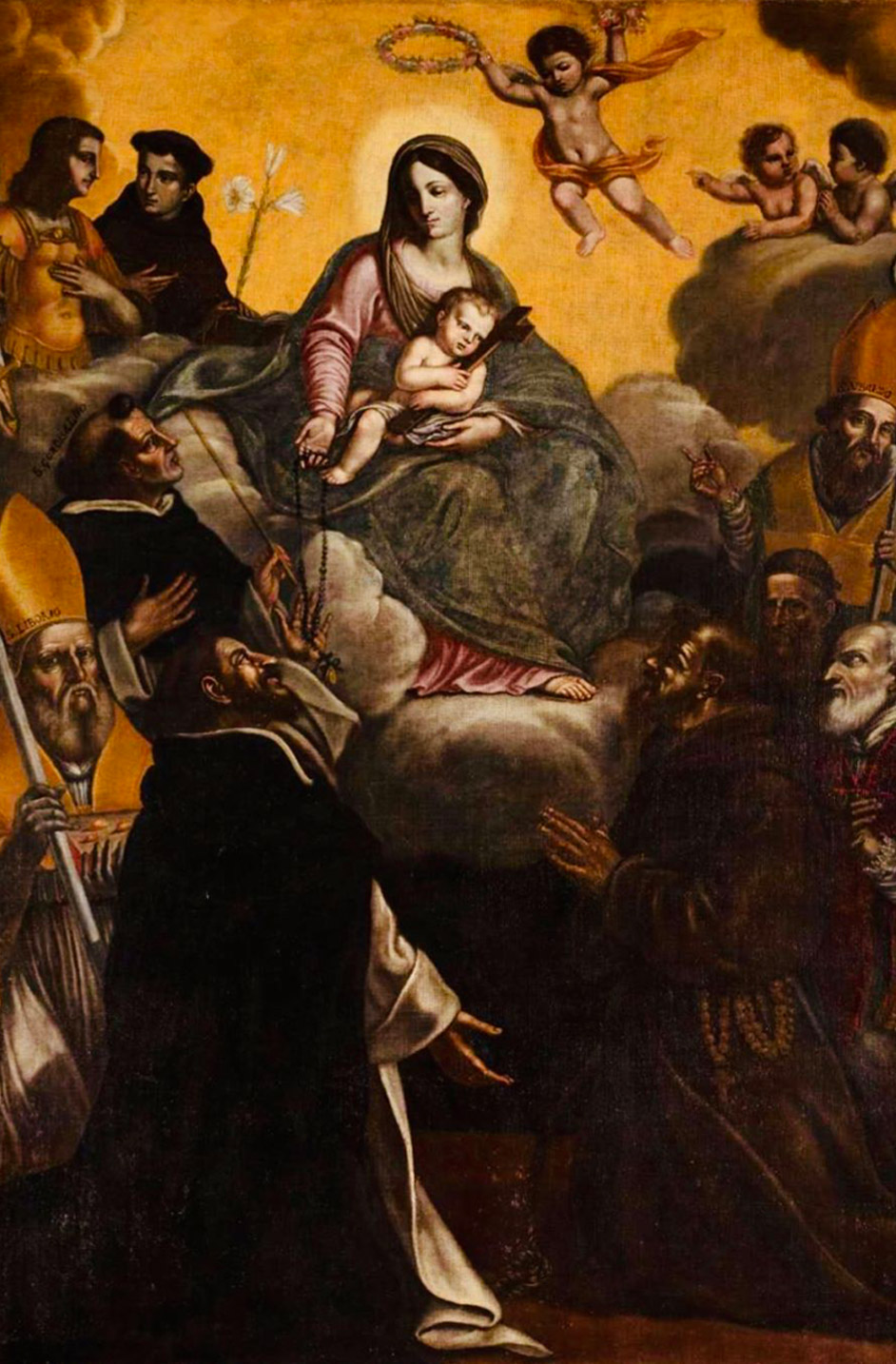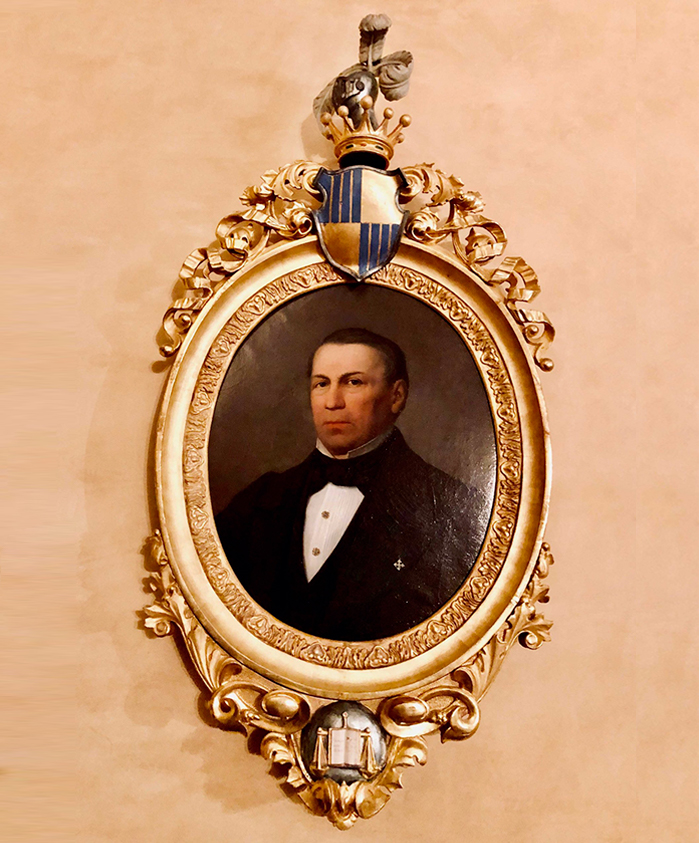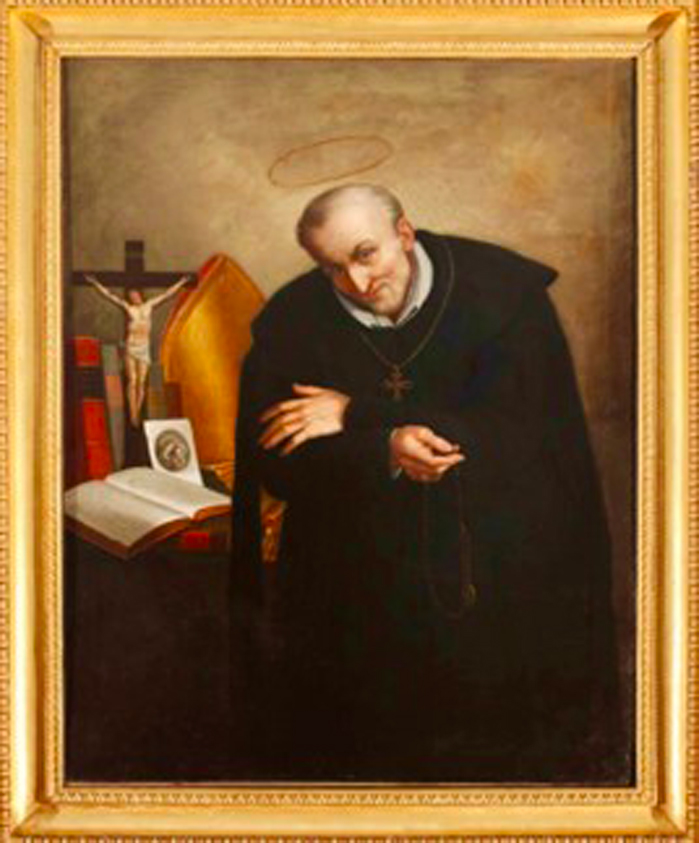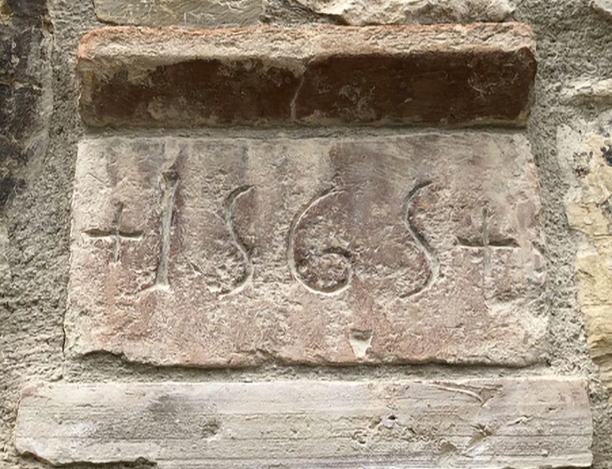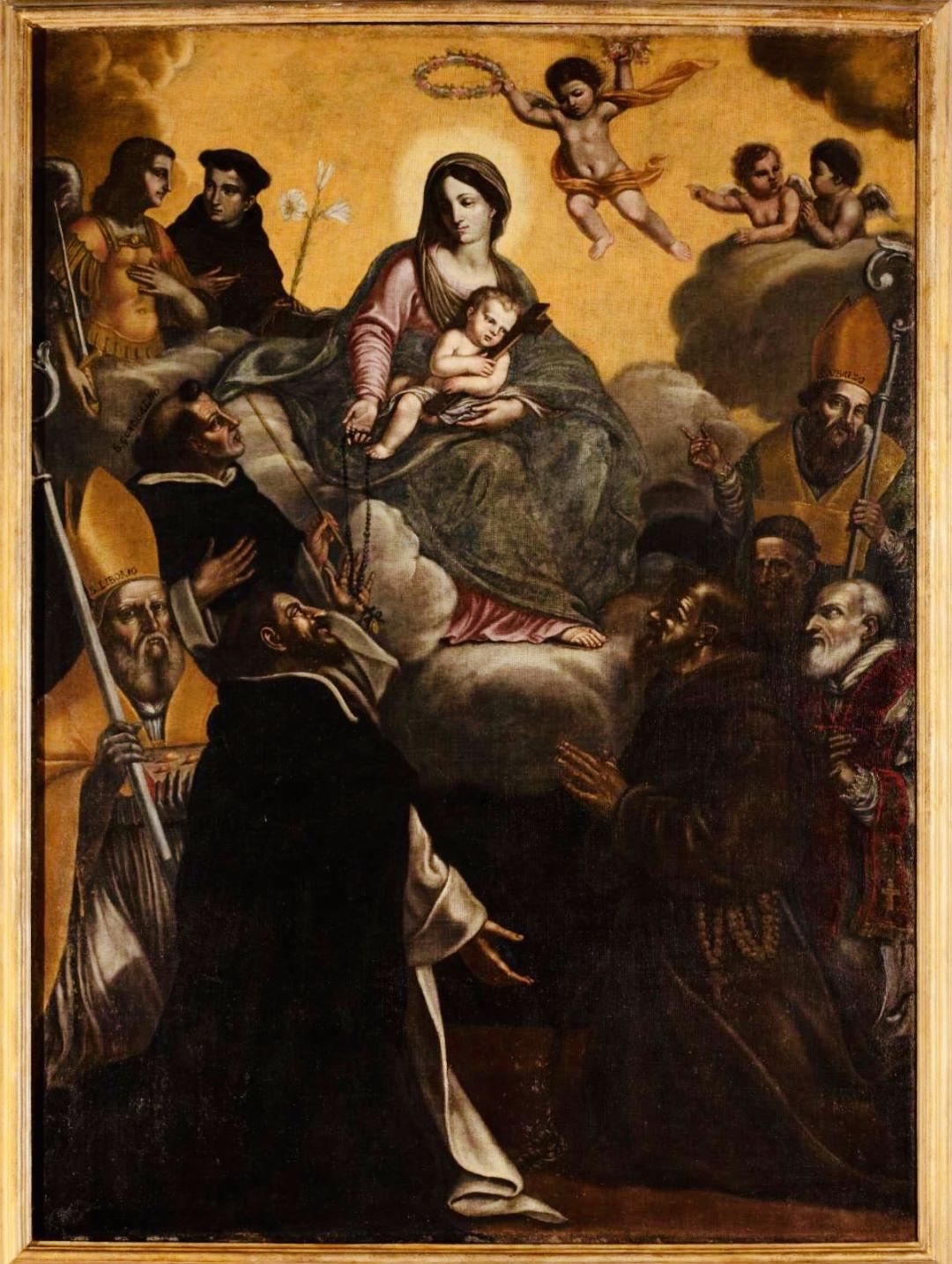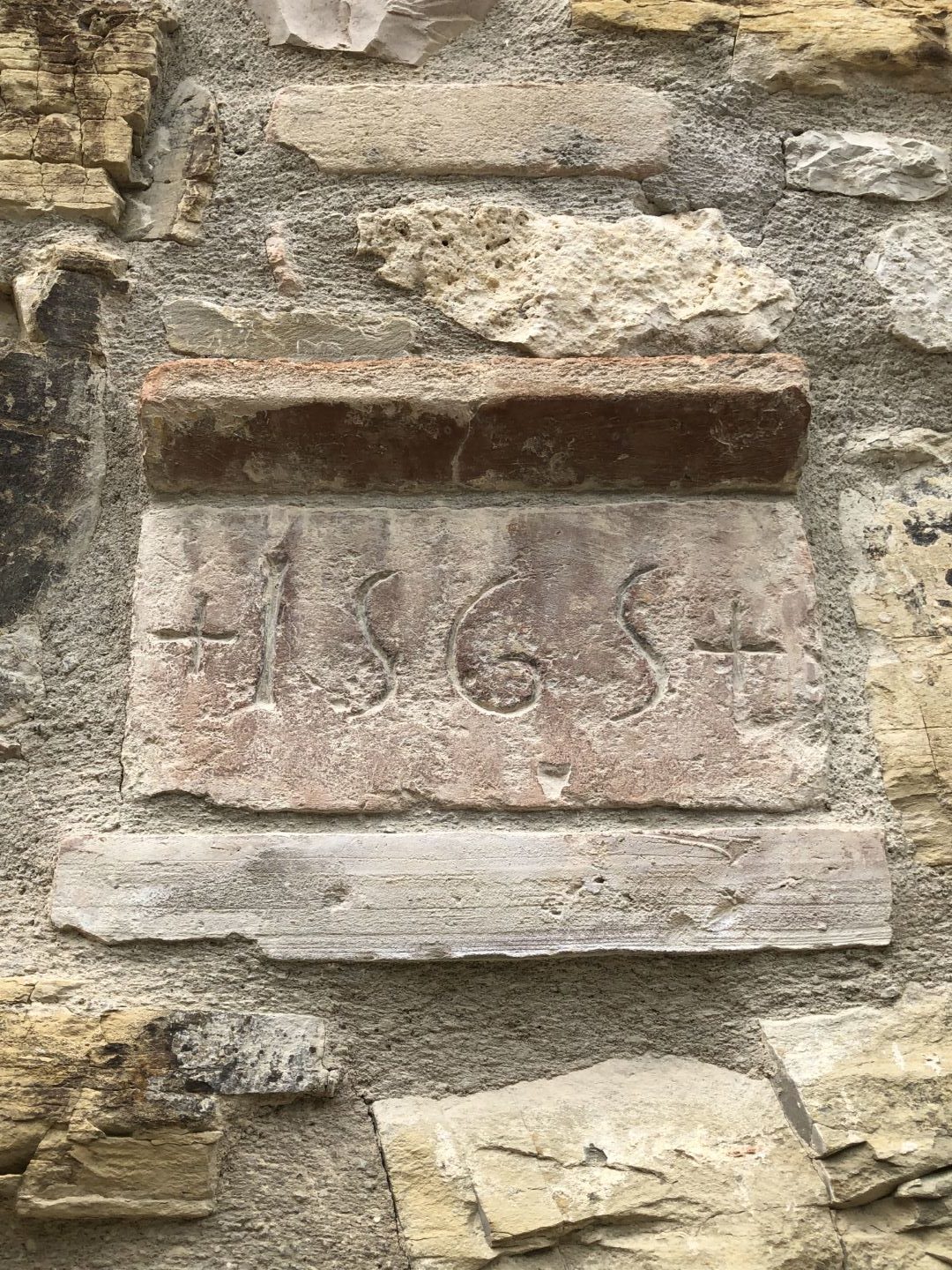Archaeologists believe that, during the Roman era, the area on which Palazzo Grande now stands was a center for the production and trade of food products. It is probable that during the Middle Ages a “Curtis Publica”—a building from which a wealthy local lord exercised functions of control over the territory—was built there, making it the political-administrative centre of the region. By the end of the Middle Ages, this ancient structure became a convent of friars. According to documents of 1489, in that period it was known as the “Palazzo de’ Frati” (Palace of the Friars). In the 16th century, the Palazzo was acquired by the Count Gentile Baldeschi who, with his sons Aurelio and Filippo, carried out considerable works of restructuring, giving the villa the appearance that can still be admired today; so this noble family gave birth to “Palazzo de’ Baldeschi”. In the same period the Baldeschi family, whose primary palazzo is now a museum on the main square of Perugia, built a large park adjacent to the villa and renovated the chapel dedicated to San Filippo Neri, still consecrated, which is located within the Palazzo.
Between the 17th and 19th centuries, the Baldeschi family used the Palazzo as a summer residence and as a place to host and entertain illustrious friends and merchants traveling between Florence or Siena and Perugia, at the time one of the major economic and political centres in the Italian peninsula. In this period the property included the best comforts for the time, such as a large park, horse sheds, a kitchen, a frescoed dining room (still perfectly intact) and, on the upper floors, bedrooms and rooms for leisure and games where guests could relax, be entertained, or conduct business. Between 1846 and 1861, when Umbria was administered by the papacy, Count Alessandro Baldeschi, a friend of Pope Pius IX, was appointed “Papa Delegato” (Delegate of the Pope) and the Palazzo became the seat of the Pontifical Delegation. However, over the ensuing years, the property fell into a state of disrepair.
After years of decay, in 1961 the property was purchased by an Umbrian family, the Generosi’s, who, with great commitment and passion, carried out extensive renovation work, restoring its ancient elegance and, following an earthquake in 1997, transforming it into a boutique hotel. Under the Generosi’s ownership, Palazzo Grande once again became a center of social life of the Commune of Corciano, hosting performances, events, and activities for Umbrians of all ages. In 2018, Palazzo Grande was purchased from the Generosi’s by an American family, who undertook further interior and exterior restoration work, and equipped it with the most modern facilities. Today, Palazzo Grande once again stands ready to welcome guests seeking a quintessentially Umbrian experience of history, culture, comfort and beauty.
Archaeologists believe that, during the Roman era, the area on which Palazzo Grande now stands was a center for the production and trade of food products. It is probable that during the Middle Ages a “Curtis Publica”—a building from which a wealthy local lord exercised functions of control over the territory—was built there, making it the political-administrative centre of the region.
By the end of the Middle Ages, this ancient structure became a convent of friars. According to documents of 1489, in that period it was known as the “Palazzo de’ Frati” (Palace of the Friars).
In the 16th century, the Palazzo was acquired by the Count Gentile Baldeschi who, with his sons Aurelio and Filippo, carried out considerable works of restructuring, giving the villa the appearance that can still be admired today; so this noble family gave birth to “Palazzo de’ Baldeschi”.
In the same period the Baldeschi family, whose primary palazzo is now a museum on the main square of Perugia, built a large park adjacent to the villa and renovated the chapel dedicated to San Filippo Neri, still consecrated, which is located within the Palazzo.
Between the 17th and 19th centuries, the Baldeschi family used the Palazzo as a summer residence and as a place to host and entertain illustrious friends and merchants traveling between Florence or Siena and Perugia, at the time one of the major economic and political centres in the Italian peninsula.
In this period the property included the best comforts for the time, such as a large park, horse sheds, a kitchen, a frescoed dining room (still perfectly intact) and, on the upper floors, bedrooms and rooms for leisure and games where guests could relax, be entertained, or conduct business.
Between 1846 and 1861, when Umbria was administered by the papacy, Count Alessandro Baldeschi, a friend of Pope Pius IX, was appointed “Papa Delegato” (Delegate of the Pope) and the Palazzo became the seat of the Pontifical Delegation. However, over the ensuing years, the property fell into a state of disrepair.
After years of decay, in 1961 the property was purchased by an Umbrian family, the Generosi’s, who, with great commitment and passion, carried out extensive renovation work, restoring its ancient elegance and, following an earthquake in 1997, transforming it into a boutique hotel.
Under the Generosi’s ownership, Palazzo Grande once again became a center of social life of the Commune of Corciano, hosting performances, events, and activities for Umbrians of all ages.
In 2018, Palazzo Grande was purchased from the Generosi’s by an American family, who undertook further interior and exterior restoration work, and equipped it with the most modern facilities.
Today, Palazzo Grande once again stands ready to welcome guests seeking a quintessentially Umbrian experience of history, culture, comfort and beauty.

